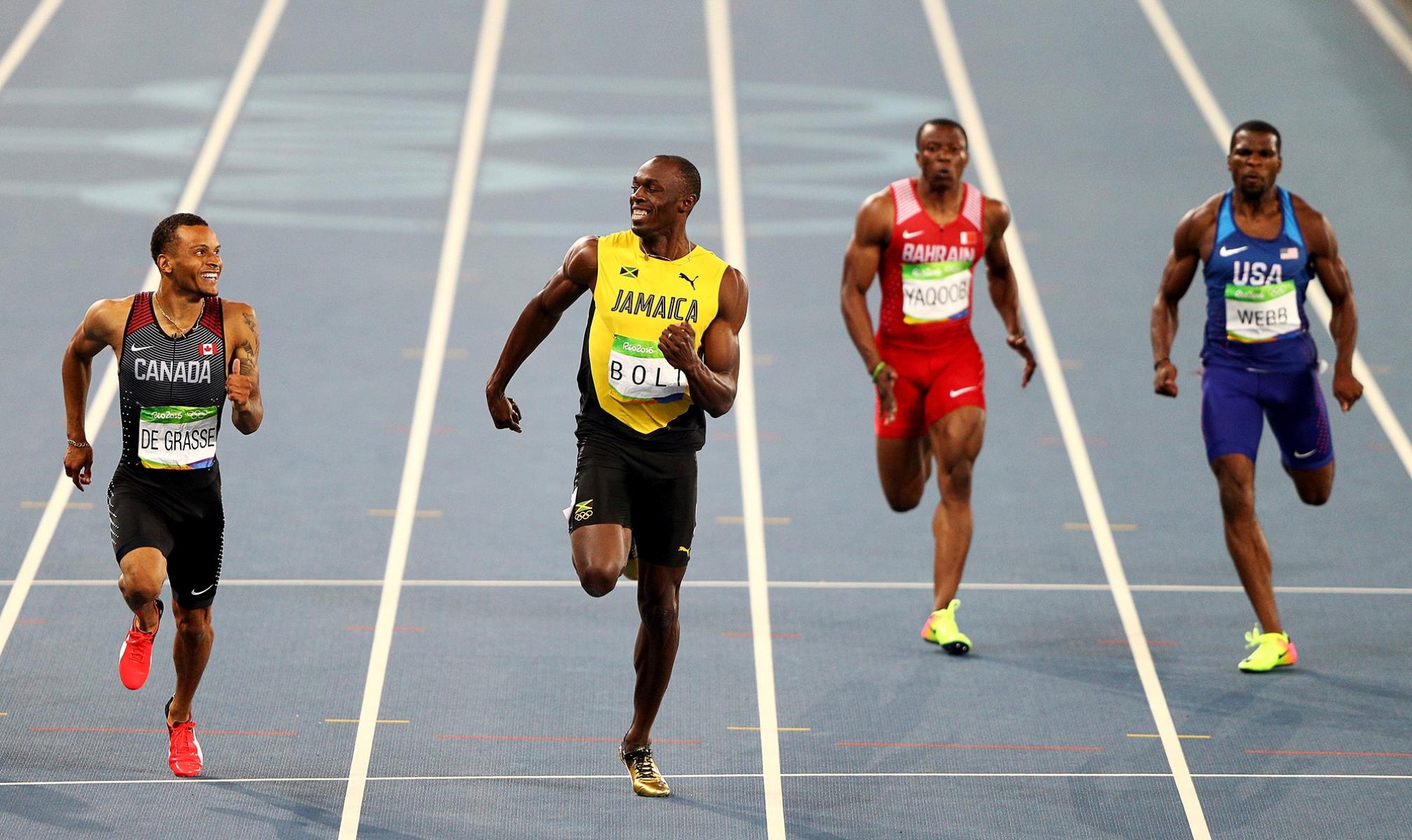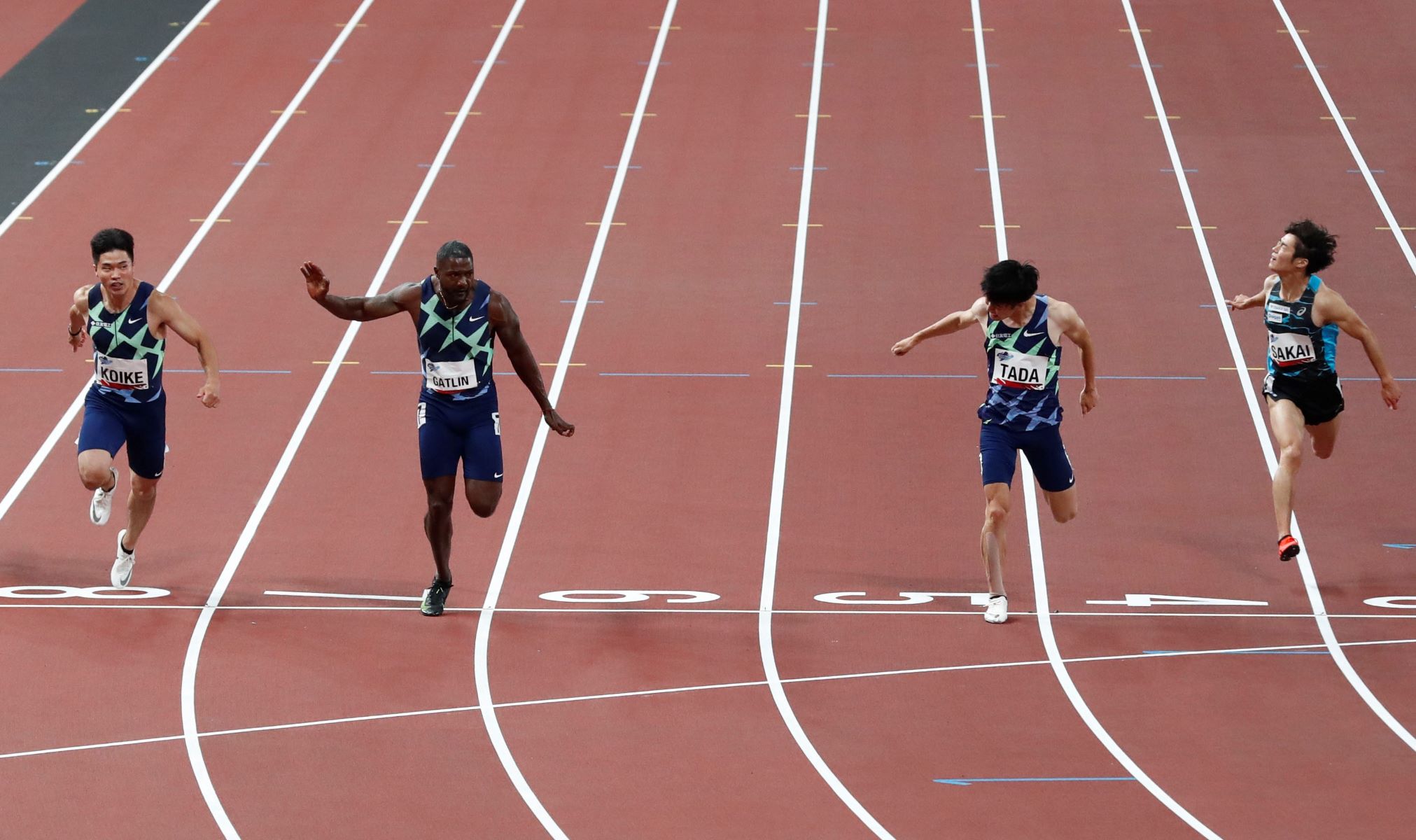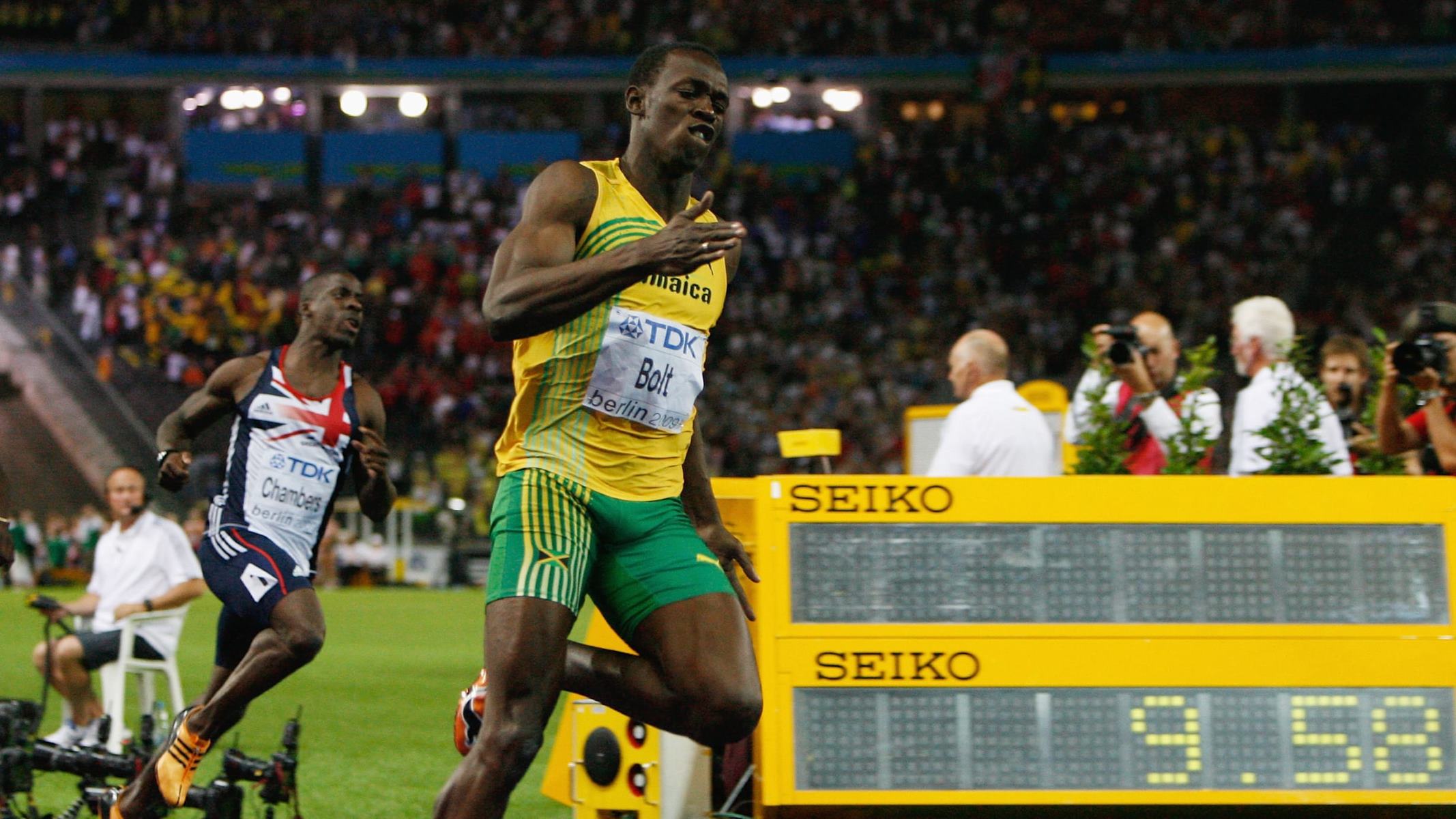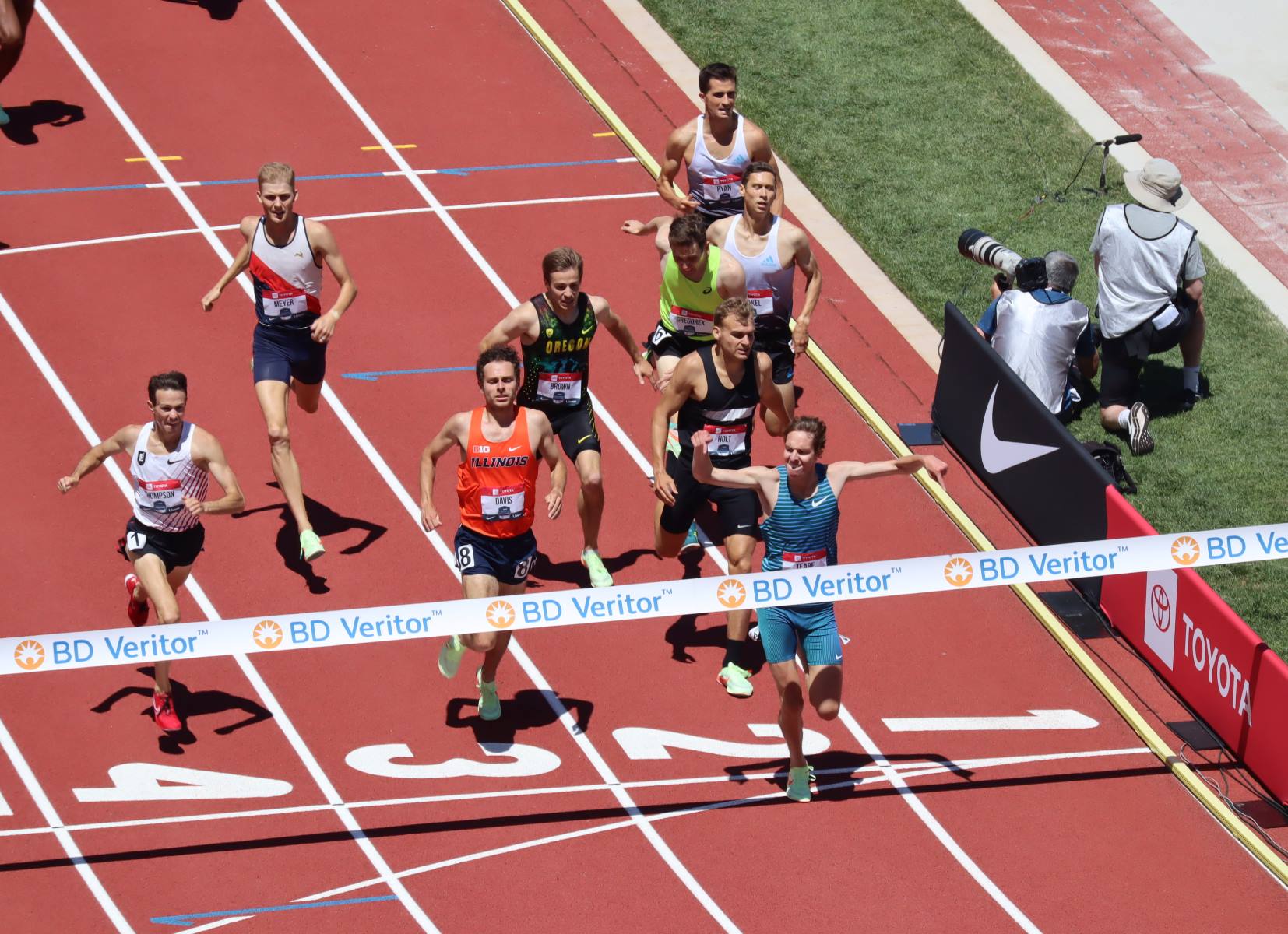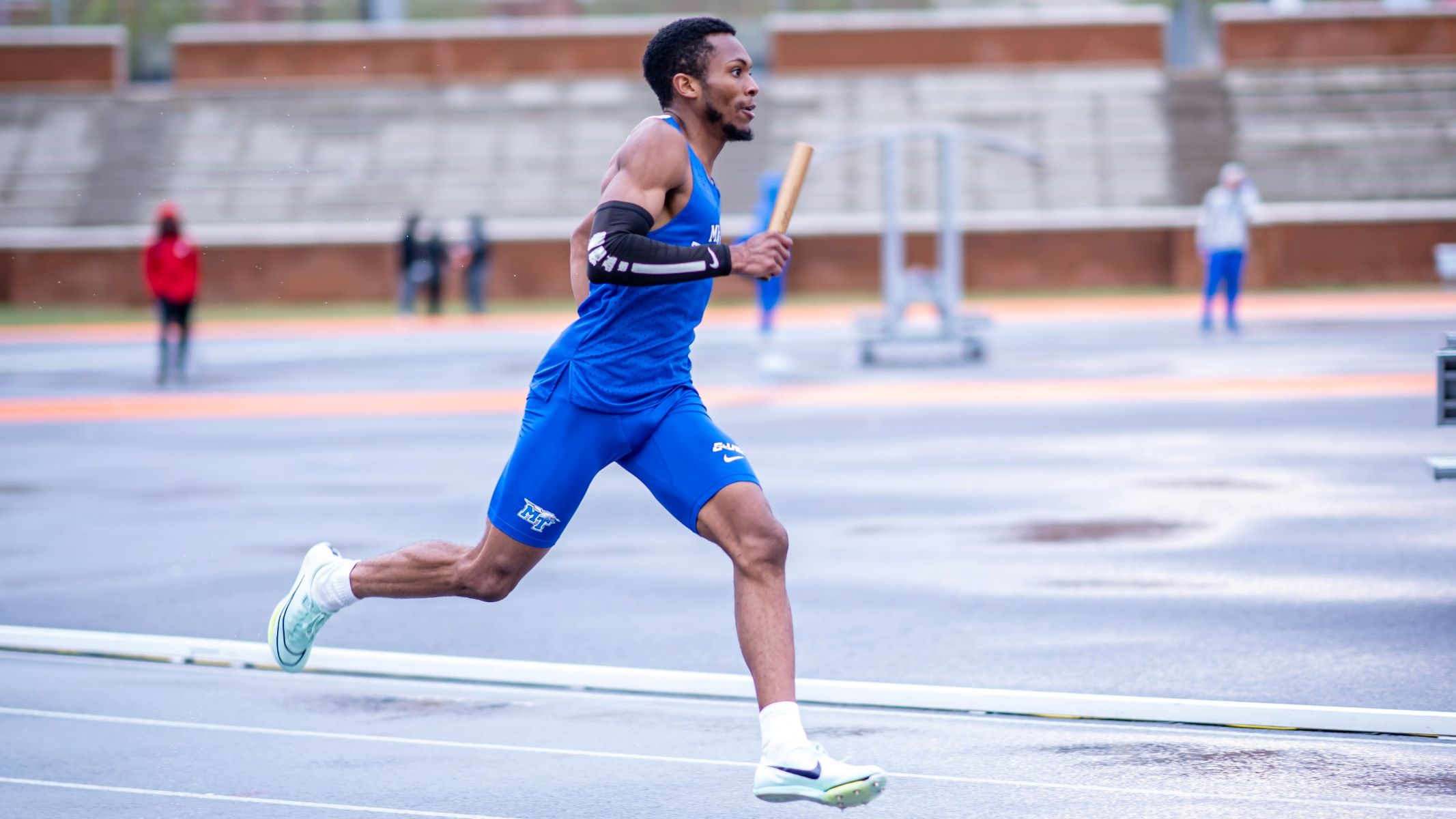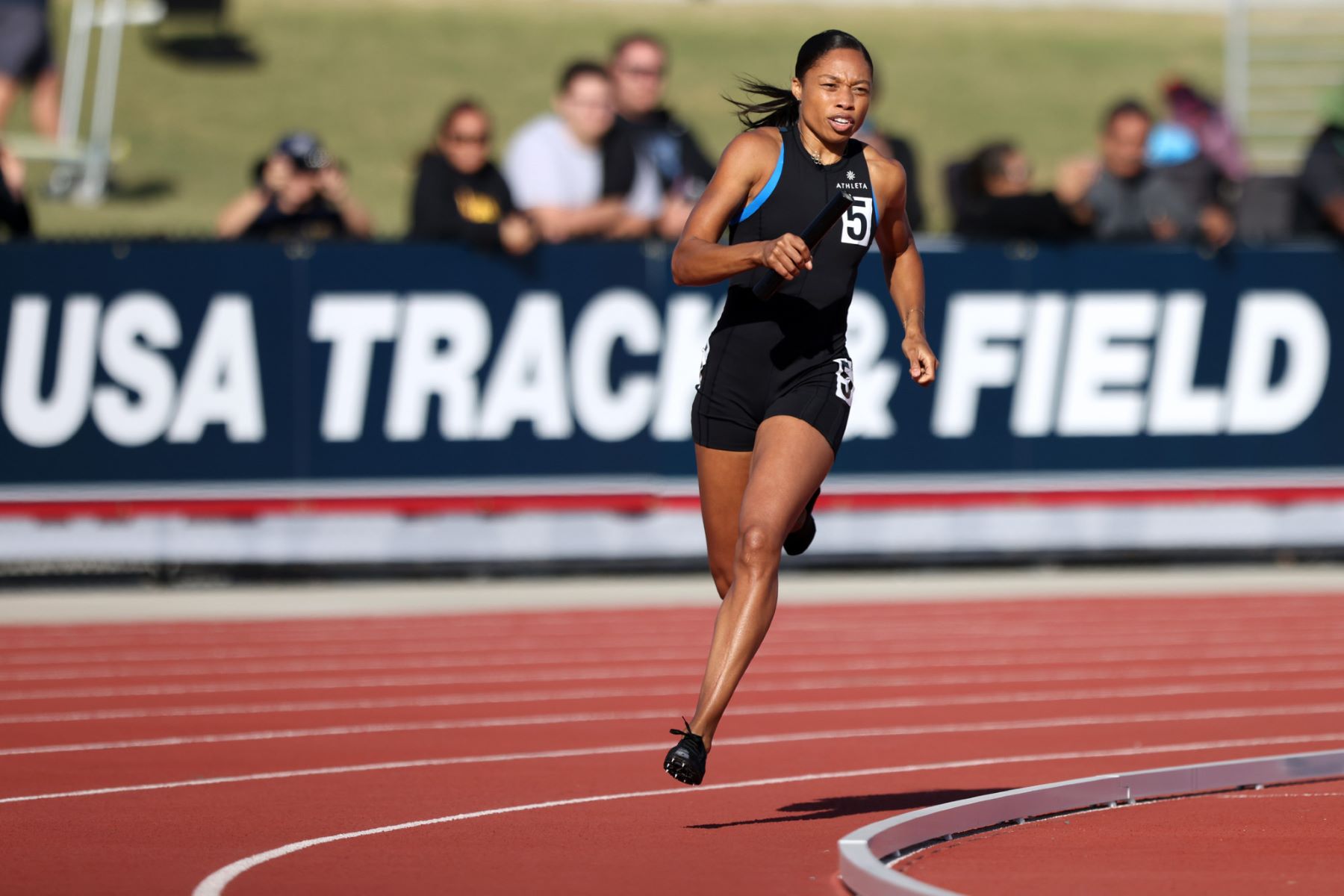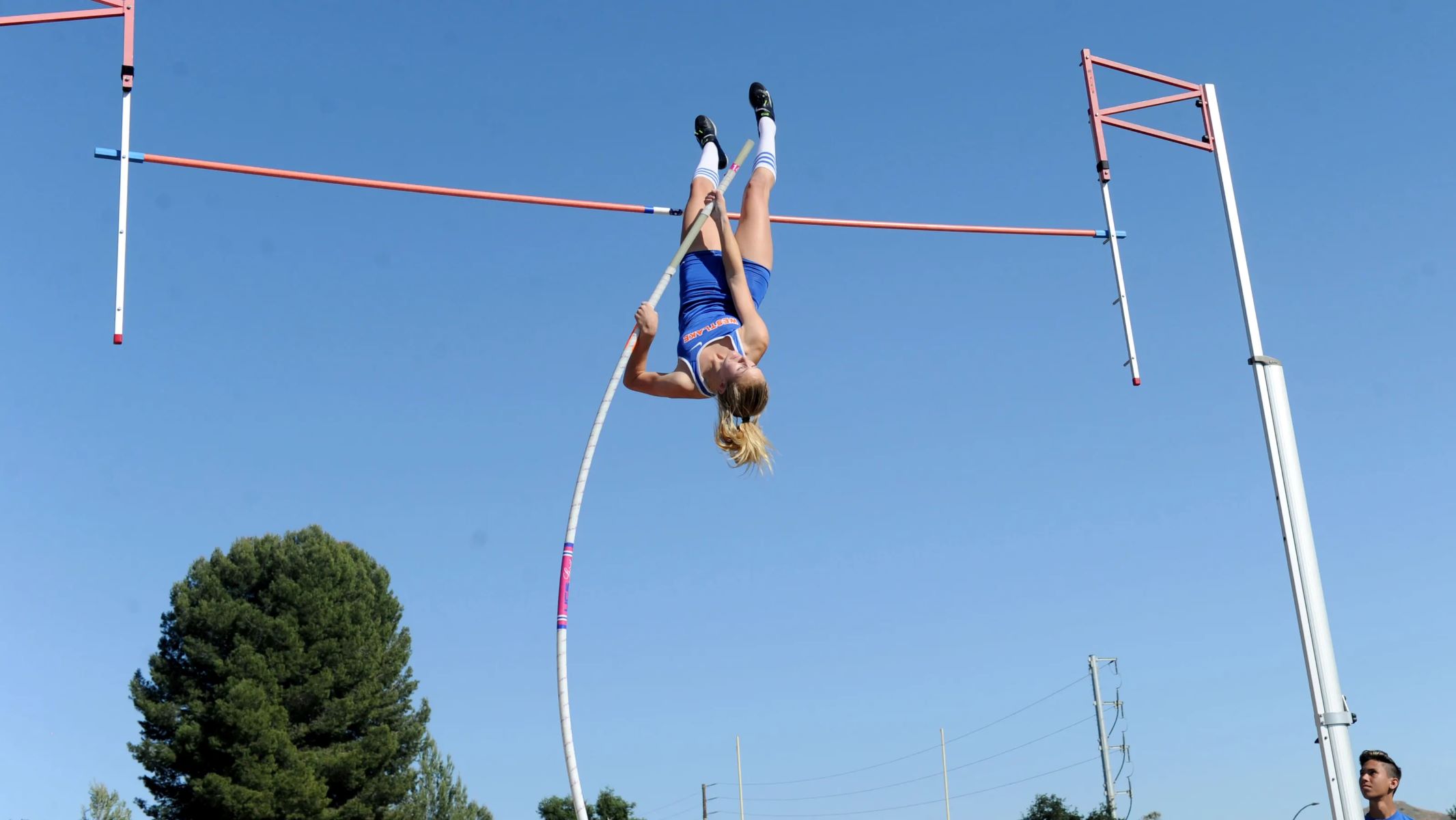

Featured
What Is Pole Vault In Track And Field
Published: September 16, 2023
Learn about the challenging sport of pole vault in track and field. Discover the techniques, equipment, and athletes featured in this exhilarating event.
Introduction
Pole vaulting is an exhilarating and gravity-defying event in the realm of track and field athletics. Athletes use a long, flexible pole to propel themselves over a bar suspended at varying heights. It requires a unique combination of strength, speed, agility, and technique. The pole vaulter’s ability to clear progressively higher heights is a testament to their skill, determination, and athleticism.
With its origins dating back to ancient Greece, pole vaulting has evolved into a highly technical and popular athletic discipline. It is included in major athletic competitions, such as the Olympic Games and World Championships, captivating audiences around the world with its impressive displays of human ability.
This article will delve into the fascinating world of pole vaulting, exploring its history, rules and techniques, the equipment used, training methods, notable athletes, and safety precautions. Whether you are an aspiring pole vaulter, a fan of track and field, or simply curious about this captivating sport, join us as we uncover the intricacies and excitement of pole vaulting.
So, let’s step onto the track and embark on an exhilarating journey into the realm of pole vaulting, where athletes soar to new heights and redefine the limits of human potential.
History of Pole Vaulting
The history of pole vaulting can be traced back thousands of years to ancient civilizations. Although the exact origins of the sport are unclear, evidence suggests that pole vaulting was practiced in ancient Greece and the Roman Empire. In these early iterations, the practice primarily focused on leaping over obstacles rather than clearing a bar.
The modern evolution of pole vaulting began in the mid-19th century when bamboo poles replaced the previously used wooden poles. This innovation allowed athletes to clear higher heights and sparked interest in the sport. However, it wasn’t until the 20th century that the sport truly developed and gained prominence.
In 1896, pole vaulting was included in the first modern Olympic Games in Athens, Greece. The event quickly gained popularity, both among athletes and spectators, and soon became a standard discipline in track and field competitions worldwide.
Over the years, advancements in pole technology have revolutionized the sport. The poles transitioned from bamboo to fiberglass and eventually to carbon fiber, which provided greater flexibility and improved performance. These advancements allowed athletes to achieve greater heights and set new world records.
Pioneers like Cornelius Warmerdam, Bob Richards, and Sergey Bubka pushed the boundaries of the sport, setting numerous records and captivating audiences with their extraordinary abilities. Bubka, in particular, holds the record for the highest pole vault clearance, with an astonishing height of 6.14 meters.
Today, pole vaulting continues to thrive as an integral part of track and field competitions. The event showcases the incredible athleticism, skill, and determination of athletes who strive to reach new heights and push the limits of human potential.
As the sport continues to evolve, it is sure to captivate the imaginations of athletes and spectators alike, inspiring future generations to take up the challenge of pole vaulting and rewrite the record books.
Rules and Techniques of Pole Vaulting
Pole vaulting is governed by a set of rules and regulations to ensure fair competition and athlete safety. Understanding these rules is essential for both athletes and spectators. Let’s explore the key rules and techniques involved in the exhilarating sport of pole vaulting.
1. Height Clearance: The objective of pole vaulting is to clear a bar suspended between two vertical poles. Athletes must clear the bar without dislodging it to register a successful jump. The height is progressively increased after each successful clearance, with the winner determined by the highest height achieved.
2. Approach Run: Athletes begin their jump with an approach run. The length of the approach varies depending on the athlete’s skill level and preference but typically ranges from 40 to 60 meters. The approach enables athletes to build up speed and momentum, crucial for a successful vault.
3. Planting the Pole: As the athlete nears the take-off area, they use their dominant hand to grip the pole and plant it into the vaulting box. The pole’s placement and angle are crucial for generating the necessary energy and pole bend during the subsequent stages of the jump.
4. Take-off and Swing: With the pole planted, the athlete executes a powerful take-off, transferring their momentum into an upward swing. The swinging motion is crucial for converting horizontal momentum into vertical lift. Proper timing and body positioning are essential for a successful swing.
5. Clearing the Bar: As the athlete reaches the peak of their swing, they must arch their body and turn upside down to clear the bar. This technique is known as the “inverted” position. Clearing the bar requires precise coordination between the athlete’s body, pole, and timing to avoid knocking the bar off.
6. Landing: After clearing the bar, the athlete releases the pole and prepares for landing. They aim to land safely and minimize any impact on their body. Proper technique includes landing on the back or shoulders in the landing pit, absorbing the impact and preventing injuries.
7. Fouls: The sport has strict foul rules. Athletes can incur fouls for dislodging the bar during their vault, failing to clear the bar, or stepping completely outside the landing pit area. Accumulating multiple fouls can result in disqualification.
Mastering these rules and techniques requires dedicated training, practice, and the guidance of experienced coaches. Pole vaulting is not only a test of physical ability but also a mental challenge. Athletes must maintain focus, confidence, and composure to perform at their best and achieve new heights in this captivating sport.
Equipment Used in Pole Vaulting
Pole vaulting requires specialized equipment to ensure both performance and safety. Let’s take a closer look at the key equipment used in pole vaulting.
1. Pole: The pole is the most essential piece of equipment in pole vaulting. It is typically made of lightweight materials, such as fiberglass or carbon fiber, to provide flexibility and strength. The length and stiffness of the pole vary based on an athlete’s skill level, body weight, and personal preference. The pole acts as a lever, storing and releasing energy to propel the athlete over the bar.
2. Vaulting Box: The vaulting box is a metal or wooden container embedded in the ground, where the pole is planted during take-off. It provides stability and ensures an accurate and consistent planting position for the pole. The dimensions and positioning of the vaulting box comply with specific regulations to maintain fairness in competition.
3. Landing Pit: The landing pit is a cushioned pad where athletes land after clearing the bar. It consists of a foam-filled mattress covered with a durable vinyl or canvas material. The landing pit minimizes the impact on athletes’ bodies and helps prevent injuries. It is designed to absorb and distribute the landing force safely.
4. Standards and Uprights: The standards and uprights are the vertical supports that hold the crossbar in place. They are made of metal and provide stability and adjustability to accommodate different bar heights. The standards are positioned outside the landing area at each end, while the uprights hold the crossbar between them.
5. Crossbar: The crossbar is a lightweight, flexible rod made of fiberglass or metal. It sits on top of the uprights and is dislodged if touched by the athlete during a jump. The height of the crossbar is adjusted throughout the competition as athletes successfully clear each height.
6. Grips: Grips are adhesive tapes wrapped around the pole at specific points for better grip and control. They help athletes maintain a secure hold on the pole during their run-up and throughout the swinging motion.
7. Safety Equipment: Athletes may choose to wear additional safety equipment such as helmets, knee pads, and wrist guards for added protection during training or competition. These items help reduce the risk of injuries, particularly when attempting more challenging jumps.
It’s crucial for athletes to use well-maintained and properly certified equipment to ensure their safety and maximize their performance. Regular inspection and maintenance of the equipment are essential to identify any wear and tear and ensure it complies with the regulations set by the governing bodies of the sport.
By utilizing the right equipment, athletes can optimize their performance and ensure a safe and successful pole vaulting experience.
Training and Conditioning for Pole Vaulting
Pole vaulting is a physically demanding sport that requires a combination of strength, speed, flexibility, coordination, and technique. Athletes must undergo specific training and conditioning programs to optimize their performance and reduce the risk of injuries. Let’s explore the key elements of training and conditioning for pole vaulting.
1. Strength Training: Building overall strength is crucial for pole vaulters to generate the power necessary for take-off and clearing the bar. Strength training exercises focus on developing the lower body, upper body, and core muscles. Squats, lunges, deadlifts, bench presses, and pull-ups are common exercises incorporated in strength training programs.
2. Speed and Agility: Sprinting and agility drills are essential for pole vaulters to improve their speed and quickness during their approach run. Training includes interval running, shuttle sprints, ladder drills, and plyometric exercises to enhance explosive power and agility.
3. Flexibility and Mobility: Pole vaulters require a high degree of flexibility and mobility to perform proper technique during the swing and clearance phase. Stretching exercises, yoga, and mobility drills help improve range of motion, prevent muscle imbalances, and reduce the risk of injuries.
4. Technique and Skill Work: Pole vaulters spend significant time mastering the technical aspects of the sport. This includes practicing the approach run, planting the pole, executing the swing, and coordinating body movements for effective clearance over the bar. Coaches provide guidance and feedback to refine athletes’ technique and optimize performance.
5. Plyometrics: Plyometric exercises help improve the dynamic power and explosiveness required during the take-off phase. Box jumps, depth jumps, bounding, and medicine ball throws are examples of plyometric exercises that enhance the athlete’s ability to generate maximum force in a short period.
6. Core and Stability Training: A strong and stable core is essential for maintaining body control and balance during the vaulting process. Core exercises, such as planks, Russian twists, and medicine ball rotations, are incorporated to develop a stable and strong midsection.
7. Rest and Recovery: Adequate rest and recovery are vital in any training program. Athletes need time to allow their muscles to repair and rebuild. Rest days and proper sleep contribute to optimal performance and injury prevention.
It is essential for pole vaulters to work closely with experienced coaches who can design personalized training programs based on individual strengths, weaknesses, and goals. Gradual progression, proper technique focus, and periodization are crucial in maximizing training results and minimizing the risk of overuse injuries.
Remember, pole vaulting is a highly technical sport, and consistent and focused training is necessary to achieve the heights athletes aspire to reach.
Notable Pole Vaulters in Track and Field
Pole vaulting has seen remarkable athletes who have left a lasting impact on the sport through their exceptional skills, record-breaking performances, and inspiring achievements. Let’s highlight some of the most notable pole vaulters in track and field history.
1. Sergey Bubka: Hailing from Ukraine, Sergey Bubka is widely regarded as one of the greatest pole vaulters of all time. He dominated the sport in the 1980s and 1990s, setting numerous world records and winning six consecutive World Championships. Bubka famously cleared the height of 6.14 meters, a record that stood for over 20 years.
2. Renaud Lavillenie: French athlete Renaud Lavillenie earned global recognition when he surpassed Bubka’s long-standing outdoor world record at the 2014 Donetsk Indoor Championships, clearing 6.16 meters. Lavillenie’s consistency and technical precision have made him one of the sport’s icons. He won the Olympic gold medal in 2012 and secured multiple European and World Championship titles.
3. Yelena Isinbayeva: Hailing from Russia, Yelena Isinbayeva is considered the greatest female pole vaulter in history. She held the world record for both indoor and outdoor competitions, with her indoor mark of 5.06 meters standing for over a decade. Isinbayeva won two Olympic gold medals and three World Championship titles, becoming a true legend in the sport.
4. Bob Richards: American athlete Bob Richards made a significant impact on the sport in the 1950s. He became the first pole vaulter to clear 15 feet (4.57 meters) and won back-to-back Olympic gold medals in 1952 and 1956. Richards’ sportsmanship and contributions beyond his competitive career earned him recognition as a symbol of integrity and leadership in athletics.
5. Stacy Dragila: Stacy Dragila, an American athlete, played a pivotal role in popularizing women’s pole vaulting. She won the first-ever women’s Olympic gold medal in pole vaulting at the 2000 Sydney Olympic Games. Dragila set multiple world records and claimed multiple World Championship titles, cementing her status as a trailblazer and inspiration for future generations of female pole vaulters.
6. Cornelius Warmerdam: Cornelius Warmerdam, often referred to as the “Human Javelin,” was a dominant pole vaulter in the 1940s. He was the first to clear the mythical 15-foot barrier and set 43 world records during his career. Warmerdam’s innovative techniques and relentless pursuit of perfection revolutionized the sport of pole vaulting.
7. Thiago Braz: Brazilian athlete Thiago Braz created an upset by winning the gold medal at the 2016 Rio Olympics. He cleared a personal best height of 6.03 meters, defeating the reigning champion Lavillenie. Braz’s triumph showcased the unpredictable nature of pole vaulting and the potential for new stars to emerge.
These exceptional athletes, along with many others, have left an indelible mark on the sport of pole vaulting. Their achievements continue to inspire both aspiring athletes and passionate fans, pushing the boundaries of what is deemed possible in this thrilling discipline.
Common Injuries in Pole Vaulting
Pole vaulting is a physically demanding sport that places significant stress on the athlete’s body. While athletes strive for remarkable heights, they are also susceptible to certain injuries. Let’s explore some of the common injuries that pole vaulters may encounter during training or competition.
1. Sprained Ankles: Landing on the mat after clearing the bar can sometimes lead to ankle sprains. The force of impact combined with the dynamic movement can cause the ankle to twist or roll, resulting in ligament damage.
2. Shoulder Injuries: The shoulder joints are subjected to intense stress during the pole plant and swing. Over time, repeated stress can lead to shoulder impingement, rotator cuff strains, or tendonitis.
3. Back Strains: The force exerted during the take-off and clearance phase puts strain on the lower back. Improper technique or excessive loading can result in muscle strains or even disc-related issues.
4. Wrist Pain: The forces applied to the hand and wrist during the plant and swing can lead to wrist pain or tendinitis. Athletes with weak wrist strength or improper grip position may be more prone to this type of injury.
5. Knee Injuries: The high impact of landing can sometimes place excessive stress on the knee joint, resulting in ligament sprains or meniscus tears. Inadequate strength or stability in the muscles surrounding the knee can further increase the risk of injury.
6. Concussions: In rare cases, a fall or impact during the vaulting process can lead to head injuries, including concussions. This can occur if the athletes lose control and land incorrectly or collide with the pole or landing mat.
7. Pole Breakage: Although not an injury to the athlete per se, pole breakage can occur during vaulting attempts. This can pose a risk of flying debris or falling onto the athlete, potentially causing cuts or bruises.
Prevention and mitigation strategies play a crucial role in reducing the likelihood and severity of these injuries. Proper technique, appropriate warm-up and cool-down routines, regular strength and conditioning exercises, and use of protective equipment, such as wrist supports, can help minimize the risk of injury.
Pole vaulters should also work closely with coaches and trainers who understand the biomechanics of the sport and can provide guidance on injury prevention exercises and technique refinement.
While injuries are an inherent risk in any sport, taking proper precautions and prioritizing safety can help ensure that pole vaulting remains a thrilling and rewarding experience for athletes.
Safety Precautions in Pole Vaulting
Pole vaulting is an exhilarating sport that requires athletes to be mindful of safety precautions to minimize the risk of injury. Proper adherence to safety protocols is crucial in ensuring a safe and enjoyable experience for all participants. Let’s explore some important safety precautions in pole vaulting.
1. Qualified Coaching: Athletes should work with qualified and experienced coaches who have a thorough understanding of the sport and can provide proper guidance. Coaches play a significant role in teaching proper technique, monitoring athlete safety, and creating a structured training program.
2. Equipment Inspection: Regular inspection of the equipment is essential to ensure its integrity and functionality. Athletes and coaches should inspect poles, landing mats, standards, and other equipment for any signs of damage or wear, and report or replace them as necessary.
3. Proper Warm-up and Cool-down: Athletes should warm up and cool down before and after each training session or competition. This helps prepare the body for the physical demands of pole vaulting and minimize the risk of muscle strains, sprains, and other injuries.
4. Protective Gear: Athletes may choose to wear protective gear such as helmets, knee pads, and wrist supports to reduce the risk of injury during training and competition. While not mandatory, these protective measures can provide additional safety and reassurance.
5. Controlled Environment: Pole vaulting should take place in a controlled environment with proper safety measures. Adequate space, appropriate landing pits, and secure standards contribute to a safe vaulting area. Competitions should follow strict safety protocols, including proper placement of officials, landing pit attendants, and medical personnel.
6. Injury Recognition and Treatment: Athletes and coaches should be knowledgeable about common pole vaulting injuries and their symptoms. They should be prepared to recognize and respond to minor injuries promptly and seek appropriate medical attention for more severe injuries.
7. Incremental Progression: Athletes should progress incrementally in terms of skill, technique, and height clearance. Rushing through progressions or attempting heights beyond one’s capabilities significantly increases the risk of injury. Adhering to a well-designed training program that emphasizes a steady and controlled progression is vital.
8. Clear Communication: Communication between athletes and coaches is crucial in maintaining safety. Athletes should feel comfortable discussing any concerns, discomfort, or pain they may experience during training or competition. Coaches should create an open and supportive environment that prioritizes athlete well-being.
By following these safety precautions, pole vaulters can enjoy the exhilaration of the sport while minimizing the risk of injuries. Safety should always be a priority to ensure a sustainable and thriving future for pole vaulting.
Conclusion
Pole vaulting is an awe-inspiring sport that combines athleticism, technique, and mental fortitude. From its ancient roots to modern-day competitions, pole vaulting has evolved into a captivating discipline that pushes the limits of human potential. Through this article, we have delved into the rich history of pole vaulting, explored its rules and techniques, highlighted the equipment used, discussed training and conditioning methods, mentioned notable athletes, and emphasized the importance of safety precautions.
Aspiring pole vaulters can now better understand the intricacies of the sport and the dedication required to reach new heights. Proper training, under the guidance of experienced coaches, is crucial for honing the necessary skills and ensuring optimal performance. Athletes must develop strength, speed, flexibility, and technique in order to execute flawless jumps and achieve their desired heights.
However, amidst the pursuit of greatness, safety must always remain a priority. Paying attention to equipment inspection, implementing safety protocols, and working with qualified coaches are essential for minimizing the risk of injuries in pole vaulting. Athletes should also prioritize proper warm-up and cool-down routines, wear protective gear if desired, and be mindful of incremental progressions.
As we conclude this article, we hope to have provided insight into the world of pole vaulting. Whether you’re an aspiring pole vaulter, a dedicated fan, or simply curious about the sport, pole vaulting offers a thrilling and captivating experience like no other. It is a testament to the human spirit’s drive to overcome physical barriers and achieve greatness.
So, let’s continue to marvel at the remarkable pole vaulters who have pushed the boundaries of what is possible. Let their achievements inspire us all to strive for greatness, reach new heights, and soar above the bar in our own endeavors.

